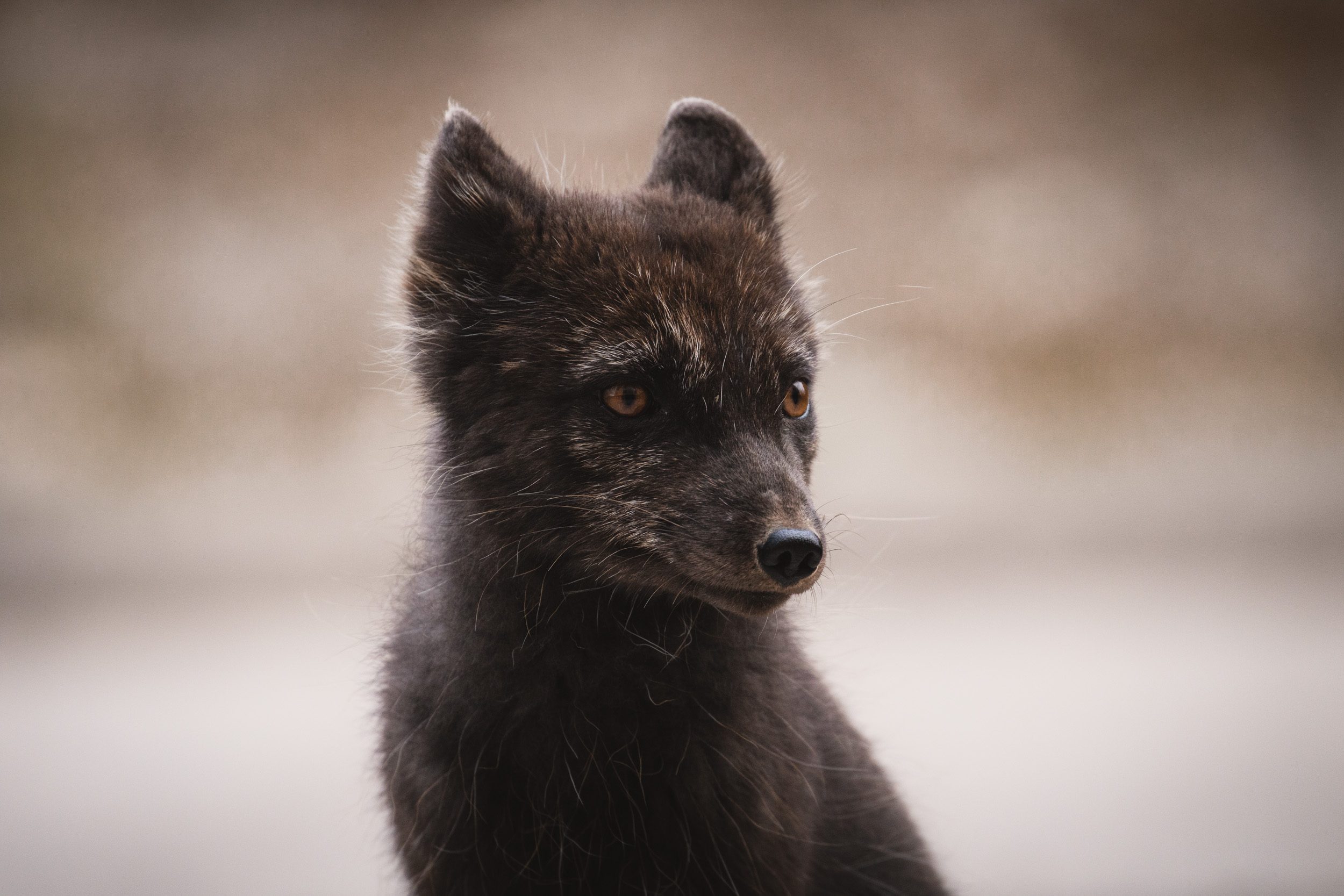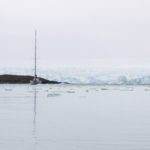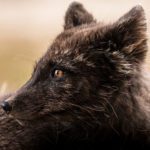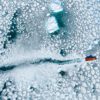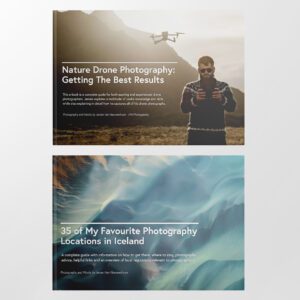From 64° North to 80° North. In this second part of a 2-part series about my sailboat adventure in the High Arctic, we travel back towards the South, encountering some exciting wildlife, discovering the longest glacier front of Svalbard and roaming around an abandoned soviet mining village.
Virgohamna
After a very rough day at sea, we arrived into the shelter of Smeerenburgfjorden. This was a welcome change to the big swells and the ship banging into the waves. We anchored at at Virgohamna, a unique historical place. It was used as a whaling base by the Dutch in the 1600’s. But what’s probably even more special about this particular place is that it served as a starting point for some very brave expeditions. Two centuries later, a wooden hangar was built there to harbor hot air balloons which were used to attempt to fly to the North Pole. The harsh Svalbardian conditions have since completely leveled this structure but there are still some remains left. Being there, at the edge of the world, I tried to imagine how brave or crazy (or stupid) you need to be to undertake such deadly expeditions into the unknown.
A polar encounter
After our landing at Virgohamna, it was time to head back South. Our next goal was Lilliehöökbreen, which is the glacier outlet that has the largest glacier front of Svalbard. At that point, about 6 days into the trip, we still hadn’t seen a polar bear. So, scared out of missing one, I ended up sitting outside on deck most of the time. I remained hopeful to spot this beautiful, but so far elusive, creature.
After a night of sailing towards our destination, we ended up anchoring in a small cove in the Lilliehöökfjorden. The cove itself provided a good base to start our exploration of Lilliehöökfjorden and the Lilliehöökbreen glacier. In the morning, we started with a hike around the cove, towards the location where once there was Nazi weather station during WW2 – a rather curious location. There isn’t much left of it today aside from some rubble and scrap metal. Unmaintained, the harsh environment is not kind to remotely located buildings.
After we returned to the boat and had some lunch, it was time to get ready and sail towards the Lilliehöökbreen glacier. Two people in our group and their guide, headed out early in kayaks. The plan was for them to kayak towards the glacier and, as we gained up to them, for us to pick them up again. After we finally lifted the anchor and left the shelter of the cove, I headed to the front of the boat with a radio and binoculars to try and locate our kayaks. After some time, we located the kayaks. As we headed for them to pick them up, I suddenly heard our guide through the radio. “POLAR BEAR, POLAR BEAR, there is a polar bear in the water”. What? Was this real? Could we finally see this, so far, elusive creature? This got me, and the whole group, very excited to say the least!
As we headed closer and closer, it became very clear that it was indeed a polar bear in the water. Through the binoculars, I was able to see the white back and head glide through the water. We picked up speed and met with our kayaks so they could safely climb back aboard. To get a better look at the polar bear, we put the zodiac in the water and we went in for a closer look. As the bear kept swimming towards the shore, we followed him from a safe distance until he managed to get to land. We switched off the outboard engine and let the flow push us closer slowly so we wouldn’t disturb him. Then he finally crawled out of the water. Just unbelievable to witness this magnificent creature in its own habitat!
After a few minutes of admiring the bear, it became clear he was also interested in us. Time to start up the engine again and get to a safer distance. One of our guides, sitting at the engine, tried to rope start the engine. First pull: nothing, second pull: nothing, third, fourth, fifth, … Nothing! The engine had given up on us. No time to waste! Immediately, we reached for the paddles underneath the sides of the zodiac, unclipped them and started paddling our way back to the boat as fast as we could. All the time, I just kept thinking about what I read about how surprisingly fast swimmers polar bears are. Maybe not the best train of thoughts in hindsight but it was definitely a good paddling-motivator! After we met up with the our sailboat again, we noticed the bear was walking along the shore, making it easy for us to follow him from the water. We all stood up on the deck, with our longest zoom lenses and admired the bear. After a while, the bear stopped walking and finally dropped himself to the ground for a nap. What a conclusion to the day!
After all the excitement, we ended up anchoring in the same cove we started our day at.

The next day, we headed back to the Lilliehöökbreen glacier as we didn’t really look at it much after spotting the polar bear. The conditions had completely changed and the wind had pushed a lot of ice from the glacier, creating some truly awesome conditions to explore the area. We spent the morning sailing and kayaking through the floating icebergs and even had lunch while being all alone in the whole area. An unbelievable experience and I love to let the photographs speak for themselves.
Kongsfjorden
After an absolutely lovely day near the glacier, it was time to head towards Kongsfjorden. This fjord was our last stop before heading back towards the South (and civilisation). We anchored in Peirsonhamna, a cove of the Blomstrandhalvøya island. On the island, we explored an abandoned mining village. Again, the harsh climate had destroyed almost everything. The only standing objects were made out of metal. It was rather interesting to see the foundations with only an iron stove standing on it: considering this is in the middle of nowhere! Because we had spent so much time in Lilliehöökfjorden the days before, we didn’t really have much time to spend in the area but it was definitely worth the stop.
In the afternoon, it was time to head back towards the South, as we needed to be in Barentsburg, a Russian settlement, in the morning. As we sailed out of the fjord, we were greeted by a whole group of beluga whales. It was an awesome moment. Out of nowhere, 20 or 30 of these white whales appeared all over the fjord, surrounding the sailboat. They were all over the place so that it was difficult to photograph them. I didn’t know where to point my lens first. Fortunately, I still managed to get a few captures.
A little bit of Russia
After a race against time during the night, we returned back to civilisation and left the raw, untouched nature of Svalbard behind. In the morning, we arrived at the first Russian settlement of our trip: Barentsburg. Barentsburg is one of two Russian settlements in Svalbard and it’s the only inhabited one. Barentsburg is old mining village, where the Russians are still digging up coal. It struck me as a very odd place, seemingly being stuck in the Soviet era. The whole atmosphere of the village is indescribably weird. It feels like the town got stuck in time. In the village, we spent some time visiting the mine itself and walking around the town.
After our time in Barentsburg, we headed back to Longyearbyen. Unfortunately, we had to say goodbye to the sailboat as it was time for the next chapter of our trip. We headed onto a second ship, the Polar Girl, as we were bound for Pyramiden, the second Russian village in Svalbard. This mining village, named after the nearby pyramid-shaped mountain, is completely uninhabited today after a series of disasters struck the people living there. First, many of its inhabitants died in a tragic plane crash. A year later, many of the remaining mine workers died in a mine accident, diminishing the population even further. Today, abandoned buildings are all that are left. In recent years, the hotel in town has been slowly fixed up and you can stay there to experience life in Pyramiden. It’s a great and unique experience to stay in this Soviet-era hotel.
Outside of the hotel, nature is taking over. Some buildings are completely leveled because of the harsh climate, others are being overtaken by wildlife or vegetation. Across from the hotel, there is even a building which has been completely transformed into a collection of kittiwake bird nests. While roaming around the town, we spotted several arctic foxes playing around and even reindeer grazing where once a lively city center was. The whole environment has a very post-apocalyptic feel to it.
On the second (& last) day, we did a hike up to the top of Pyramiden mountain. Sadly, the top was engulfed in fog when we got close to it but we still got to do a good hike. After coming down from the mountain, it was again time to head back to Longyearbyen for our last night in Svalbard.
Back to 64° North
After a relaxing day in Longyearbyen, exploring the town, it was time to head back home, back to 64 degrees North. I looked out of the plane window, reminiscing of all the great memories and experiences of the past 2 weeks. Will I be back? Yes, of course! I’m already making plans so stay tuned!
Links
Support Jeroen’s Work
As an independent photographer, Jeroen partially relies on your support to keep producing worthwhile content such as blogs, photographs, books and much more. If you want to support his work, it is possible to do so by buying his e-books & books, prints or calendars.
You can also sign up to the newsletter to stay up to date on new blog posts, projects, workshops and other interesting information.
Thank you for considering!

